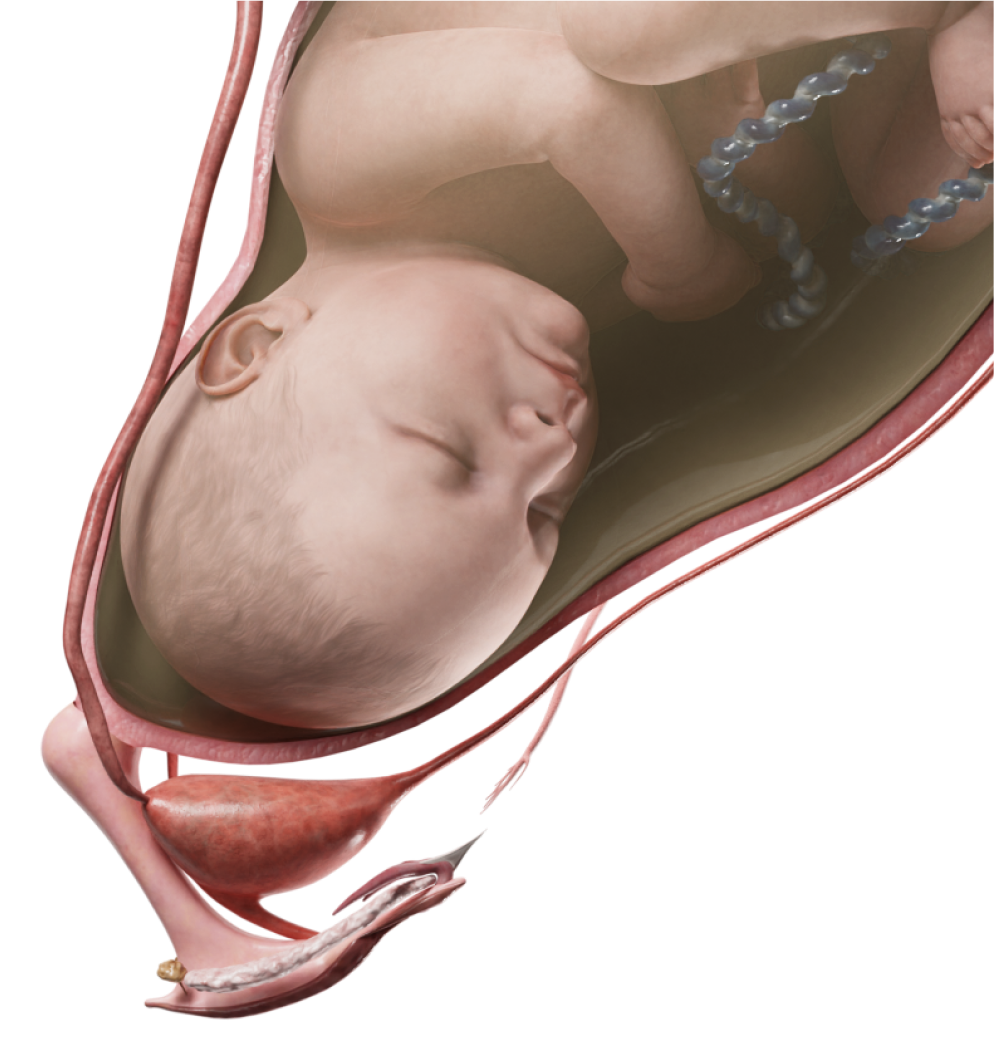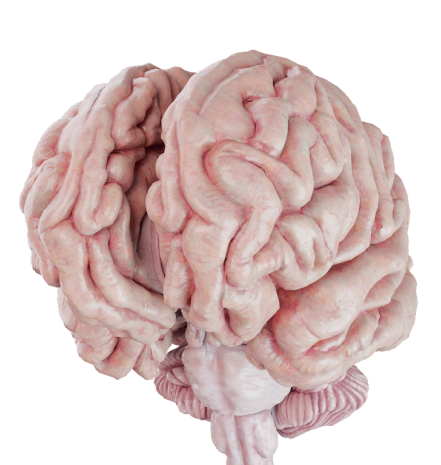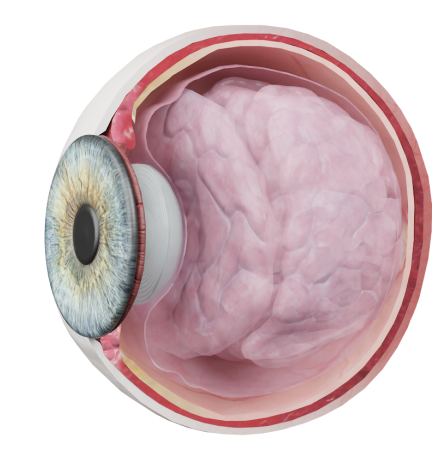Rhinitis
Rhinitis is an inflammation of the nasal mucosa that encompasses several distinct forms. All types of rhinitis share common symptoms, such as nasal congestion and discharge, also known as rhinorrhea. However, each type also has specific symptoms that help distinguish it from the others.
Classification
Acute rhinitis:
- Stage 1, irritation;
- Stage 2, serous discharge;
- Stage 3, seropurulent discharge.
Chronic rhinitis:
- infectious;
- allergic;
- hypertrophic;
- vasomotor;
- atrophic;
- ozena.
Etiology
Acute rhinitis usually lasts less than 12 weeks and is typically associated with viral or bacterial pathogens that adhere to the nasal epithelium. It is important to note that a pathological process can only develop if there are certain predisposing factors. These include damage to the nasal mucosa (e.g., dryness and crusting), exacerbation of a concomitant chronic infection, and immune disruptions, including a decreased local immune response. Adenovirus, rhinovirus, respiratory syncytial virus (RSV), influenza viruses, and parainfluenza viruses belong to the most common viral pathogens. Acute bacterial rhinitis, in turn, is primarily associated with staphylococci and streptococci (including Streptococcus pneumoniae).
Even though acute rhinitis is a nonspecific condition, it may be an initial manifestation of numerous diseases such as measles, scarlet fever, diphtheria, and meningococcal disease.
Acute rhinitis transforms into a chronic condition if it lasts more than 12 weeks. Consequently, the etiology of these conditions may be the same. In addition, chronic rhinitis can coexist with infectious diseases such as syphilis, tuberculosis, histoplasmosis, blastomycosis, leprosy (Hansen’s disease), etc. These pathologies will be discussed in more detail in the corresponding sections.
Allergic rhinitis is induced by an immunoglobulin E (IgE)-mediated reaction to inhaled allergens (most commonly animal hair, dust mites, plant pollen, and molds). This local immune response involves the release of inflammatory mediators that promote pathological reactions. Notably, an individual often has a genetic predisposition to allergies, which leads to an exaggerated immune response, a condition also referred to as atopy. Allergic rhinitis is more common in children due to an active sensitization to allergens. Moreover, this condition can be a sign of a parasitic disease (e.g., giardiasis).
Hypertrophic rhinitis typically results from posttraumatic disorders of nasal breathing. Another possible cause is chronic inflammatory diseases of the nasal cavity or paranasal sinuses.
Vasomotor rhinitis originates from a disturbed autonomic nerve supply to the nasal mucosa, resulting in an exaggerated response to various irritants. It can be subdivided into multiple categories based on the primary trigger causing the symptoms:
1) Rhinitis medicamentosa: long-term use of nasal decongestants.
2) Drug-induced rhinitis: NSAIDs, aspirin, antihypertensive drugs, ACE inhibitors, beta-blockers, psychotropic drugs, etc.
3) Hormonal rhinitis: increased progesterone levels during pregnancy, thyroid disorders, etc.
4) Occupational rhinitis: dust, wool, sawdust, etc.
5) Gustatory rhinitis: consumption of hot and spicy foods and alcohol.
6) Stress-induced rhinitis.
These types of rhinitis share similar clinical and pathomorphological characteristics despite having different etiologies. The diagnosis is based on a detailed medical history and the causative factor.
Although the exact etiology of atrophic rhinitis remains unclear, there are various theories about its possible triggers. Poor environmental conditions (dry air, dust), nasal trauma or surgery, inadequate nasal hygiene, autoimmune disorders, hormonal changes (menopause, aging), and micronutrient deficiencies (iron in particular) have been suggested as possible etiological factors.
Ozena, or foul-smelling rhinorrhea, is a type of atrophic rhinitis caused by Klebsiella ozaenae. The disease can only develop if the pathogen is accompanied by other predisposing factors. These include foci of chronic infection in the nasal cavity or paranasal sinuses, abnormal nasal aerodynamics, dryness, and microcracks.
Anatomic Pathology
The course of acute rhinitis can be divided into three consecutive stages: irritation, serous discharge, and seropurulent discharge. Hyperemia and dryness of the nasal mucosa are the hallmarks of the first stage, which usually lasts from a few hours (most often) to several days. The next stage is characterized by swelling and congestion of the mucosa, pinpoint submucosal hemorrhages (petechiae), and mucus hypersecretion. After a while (usually 4-5 days), the discharge becomes mucopurulent due to the overproduction of lymphocytes and desquamation of epithelium, indicating the third stage of the disease. Typically, inflammation resolves within 7–10 days from the onset of the symptoms.
Chronic infectious rhinitis is characterized by nonspecific changes such as mucosal hyperemia, congestion of the nasal conchae, and mucus hypersecretion associated with goblet cell hyperplasia.
Signs of allergic rhinitis include pallor of the nasal mucosa with a bluish discoloration (cyanosis), pronounced swelling of the nasal conchae, and copious clear mucus discharge. It is worth mentioning that this disease may coexist with chronic rhinosinusitis with nasal polyps (CRSwNP), a condition that can be revealed by rhinoscopy.
Excess bone tissue along the entire length of the inferior nasal concha is a distinctive feature of hypertrophic rhinitis. Proliferation of blood vessels or connective tissue is seen in less common forms of hypertrophic rhinitis, such as vascular and fibrous rhinitis.
The main morphological characteristic of vasomotor rhinitis is congestion of the cavernous tissue of the nasal conchae. Additionally, the number of goblet cells increases. As a result, the nasal conchae become purple-bluish and thickened, while the nasal passages are significantly narrowed. Hypersecretion of mucus can be associated with dysfunction in the parasympathetic nervous system. In cases of sympathetic nervous system disorders, typical manifestations will be swelling and nasal congestion.
In atrophic rhinitis, the mucosa appears pale pink, thinned, and matte, sometimes described as “parchment-like.” The discharge is usually scanty and sero-mucous. On examination, nasal crusting can be revealed. As the disease progresses, atrophic processes can affect the olfactory nerve and blood vessels of the mucosa.
The pathomorphology of ozena is similar to that of atrophic rhinitis. However, ozena progression leads to atrophy and destruction of deep underlying tissues, including the bone tissue of the conchae (due to osteoclast activity). Blood vessels become obliterated and scarred. The number of goblet cells decreases dramatically, and almost all cilia disappear. Therefore, mucus clearance is significantly diminished. The nasal passages become dilated as the concha tissue thins. Moreover, tissue destruction leads to a foul odor, which is a characteristic feature of the disease. Rhinoscopy reveals an abnormally wide nasal cavity, with the posterior wall of the nasopharynx clearly visible. Gray-green crusts often line the nasal cavity in abundance, forming what are known as “casts”.
Clinical Manifestations
The initial symptoms of acute rhinitis include difficulty breathing through the nose, sneezing, and burning sensations in the nose, accompanied by general intoxication symptoms (headache, low-grade or moderate fever, etc.). The condition gradually progresses to the second stage, when copious serous discharge is produced. This results in maceration of the nasolabial triangle skin due to the chemical composition of nasal mucus. Over time, nasal congestion tends to worsen, and some patients may also experience ear congestion and watery eyes (epiphora). In the third stage, congestion decreases, and the nasal discharge becomes thicker and changes its color to yellow or green. It is important to note that facial pain in the paranasal sinus projection may occur at any stage. The reason for this is severe mucosal edema in the sinuses and their corresponding drainage pathways to the nasal cavity.
Chronic infectious rhinitis is characterized by nasal breathing difficulties and persistent rhinorrhea (mucous or mucopurulent) with a foul odor. In addition, patients may complain of headaches or loss of smell (anosmia).
Clinical manifestations of allergic rhinitis include pruritus, sneezing, nasal congestion, and profuse serous discharge when exposed to an allergen. The condition may also affect the eyes, making them watery and itchy.
Allergic rhinitis can be classified by:
- The pattern of occurrence:
- seasonal;
- perennial.
- The duration of symptoms:
- intermittent;
- persistent.
- Severity:
- mild;
- moderate.
Symptoms of seasonal allergic rhinitis can occur during certain times of the year (once or multiple times), usually when plants are in bloom and pollen counts are higher. On the other hand, perennial rhinitis occurs year-round and is more often associated with indoor allergens (dust mites, animal hair, etc.). Intermittent allergic rhinitis refers to symptoms that are present for less than 4 consecutive days per week or less than 4 consecutive weeks per year. In contrast, persistent rhinitis symptoms last significantly longer than the specified time periods.
The disease is considered mild when it does not interfere with patients’ normal sleep or their ability to perform everyday activities. However, moderate or severe rhinitis significantly affects sleep, productivity, and the ability to perform activities of daily living.
Allergic rhinitis and atopy are closely related conditions that usually manifest in childhood. The association with asthma should be particularly emphasized since these diseases share common pathogenetic and pathophysiological mechanisms. Moreover, allergic rhinitis is considered a risk factor for asthma. It has also been proven that the course of bronchial asthma is considerably aggravated when nasal symptoms of allergy are not treated adequately.
Hypertrophic rhinitis is manifested by persistent nasal breathing difficulties, snoring, and, less frequently, anosmia.
Clinical manifestations of vasomotor rhinitis can be described as intermittent and include occasional nasal pruritus, sneezing, nasal congestion, and watery or mucous discharge that drips down the back of the throat (postnasal drip). Symptoms usually occur when exposed to various stimuli, such as changes in temperature, humidity, and body position in space (marked worsening is observed when lying on the side), increased blood pressure, strong odors, etc. This disease is more common in adults.
Patients with atrophic rhinitis complain of nasal dryness and pruritus. Crusts are firmly attached to the nasal mucosa and their removal does not bring any relief and may even cause nosebleeds. One more symptom is breathing difficulties despite the abnormally dilated nasal passages, which is called empty nose syndrome. As the disease progresses, the olfactory nerves may be affected, resulting in anosmia. Furthermore, septal perforation and nosebleeds (epistaxis) may occur.
Ozena, as a subtype of atrophic rhinitis, can exhibit all the symptoms listed above. When attempting to remove the crusts, they come off as what are referred to as “casts”, and mild nosebleeds may be observed. Symptoms of general intoxication (e.g., headache and severe fatigue) are also quite typical. The main hallmark of ozena is a persistent foul nasal odor. It is noteworthy that such an odor remains unnoticed by the patient but is strongly perceived by other individuals. For this reason, people might even try to avoid any contact with the patient, which can impact a patient’s psychological state.
Diagnosis
The diagnosis of acute and chronic rhinitis is primarily based on a thorough ENT examination (otorhinolaryngoscopy). It is also crucial to take a detailed medical history and assess the condition of the nasal mucosa and the discharge character. Additional diagnostic options include a paranasal sinus X-ray, which is used in cases of long-term disease, treatment failure, and facial pain in the projection of the paranasal sinuses. To identify the causative pathogen of chronic infectious rhinitis and its antimicrobial susceptibility, a nasal discharge culture is performed.
There are several tests available to diagnose allergic rhinitis that may vary in different clinics depending on the equipment. One of the most common methods is skin testing (e.g., scarification test, skin prick test). This is when a small amount of the suspected allergy-causing substance is applied on or just under the skin. Then, after a certain period of time, the reaction at the application site is assessed. However, the gold standard in allergic rhinitis diagnostics is allergen-specific IgE testing that measures the level of IgE antibodies to the most common allergens in blood serum. Nowadays, a rhinocytogram that measures the eosinophil count in nasal mucus is no longer popular due to its low sensitivity. The lack of eosinophils does not necessarily indicate that there is no disease. Moreover, eosinophils may be present in the nasal mucus of those suffering from non-allergic rhinitis.
Hypertrophic rhinitis with bone involvement is diagnosed with the help of the so-called "anemization" of the nasal conchae. This is when the nasal mucosa is irrigated with a vasoconstrictor solution. The diagnosis is valid if the test results are negative, meaning the condition is not responsive to vasoconstrictors.
Rhinoscopy and a detailed medical history help to diagnose vasomotor and atrophic rhinitis. In atrophic rhinitis and ozena, the nasal discharge culture is of great importance. Ozena is confirmed once either Klebsiella ozaenae has been detected in a nasal discharge culture or antibodies against this pathogen have been identified in immunological blood tests. Blood tests are also carried out to measure hemoglobin and serum iron levels. If the nasal septum is perforated, a biopsy is performed from the edge of the perforation for a subsequent histological examination. Please note that patients with rapidly deteriorating conditions should be evaluated for anti-neutrophil cytoplasmic autoantibody (ANCA)-associated vasculitis.
Treatment
Treatment for acute rhinitis is aimed at relieving symptoms. Nasal decongestants (e.g., phenylephrine, xylometazoline, and oxymetazoline) are commonly prescribed to reduce congestion and rhinorrhoea. It is also recommended to clean the nose with saline or seawater solutions to flush out pathogens, allergens, or other debris. Additionally, NSAIDs (paracetamol and ibuprofen) can be given if symptoms of general intoxication are severe.
Antibiotics play a crucial role in the treatment of infectious rhinitis. They can be administered either topically or systemically, taking into account the antimicrobial susceptibility of the pathogen. It is also recommended for patients to clean their noses with saline or seawater solutions on a regular basis.
First and foremost, allergic rhinitis requires a patient to avoid exposure to the causative agent (allergen) and to comply with the pharmacotherapy, which may vary depending on the severity of the condition. Antihistamines for topical or systemic use are recommended as a first-line therapy for all patients with this condition. Intranasal decongestants are also an option; however, they should be used for a maximum of 7–10 days. In severe cases, long-term use of intranasal steroids (for at least a month) or leukotriene receptor antagonists may be considered.
The only known treatment that tackles the allergy itself rather than the symptoms is allergen immunotherapy (AIT). It involves a regular, long-term, dose-escalation administration of allergen extracts (either subcutaneous or sublingual). As a result, the immune system becomes less sensitive to the allergen, minimizing any symptoms. In the majority of cases, AIT enables stable remission.
Hypertrophic rhinitis with bone involvement is treated surgically. The procedure, also known as partial turbinectomy, entails a careful removal of excess bone tissue while preserving the anatomical landmarks and soft tissue of the nasal conchae.
Pharmacotherapy for vasomotor rhinitis includes topical or systemic antihistamines and topical steroids (for at least a month). It is also recommended to use isotonic solutions on a regular basis to moisturize the nasal mucosa. If conservative therapy proves to be ineffective, surgical intervention may be considered. It includes various techniques, such as laser coagulation, submucous vasotomy, radiofrequency ablation, focused ultrasound, etc. During these procedures, the deep tissues of the nasal conchae are partially damaged, initiating the scarring process. As a result, the size of the turbinates reduces while the mucosa remains intact and functions normally.
The essential component of atrophic rhinitis treatment is moisturizing of the nasal mucosa. For this purpose, nasal sprays containing isotonic solutions and seawater with added dexpanthenol or hyaluronic acid can be particularly effective. If not contraindicated, iodine solutions may also be applied to the surface of the nasal mucosa. This irritates the tissue and stimulates the goblet cells, thus increasing the secretion of mucous. In addition, oil solutions containing vitamins A, D, and E (e.g., sea buckthorn, peach, and sesame oil) have a positive effect on the nasal mucosa. However, they should be used sparingly due to a possible worsening of ciliated epithelium function. If a causative pathogen is known, topical antibiotic therapy may be prescribed.
Treatment of ozena requires systemic antibiotics (preferably parenteral), considering the antimicrobial susceptibility. Apart from that, it is similar to that for atrophic rhinitis: regular nasal irrigation with saline or seawater, application of iodine solutions, and oil solutions. To achieve a favorable therapeutic effect, crusts should be regularly removed once they have softened. The nasal cavity should then be irrigated with solutions containing antibiotics.










